If you’re the kind of person who subscribes to this new wave of market-made holidays (as I do, because why the hell not observe any reason to celebrate?), then this week is especially momentous. Because by provenance unknown—divine or otherwise—the world has bestowed upon us, Negroni Week.
That’s especially good news for Louis Catizone, co-owner of amaro producer St. Agrestis in Brooklyn, New York. His newest product—in a slickly packaged, sickenly cool, ready-to-drink bottle—is a New World version of the classic cocktail, now available for the summer needs of negroni lovers.
Given the century-old Italian drink now commands an entire week, and bars dedicate entire menus to seemingly endless variations, it got me thinking about the history of the negroni, its explosive international appeal, and how we suddenly can’t seem to get enough of something once considered perhaps too bitter for the American palate.
I sat down with Catizone for a cup of something non-alcoholic on a cool Brooklyn morning to chat about booze culture and the launch of the latest iteration of the cocktail.
___
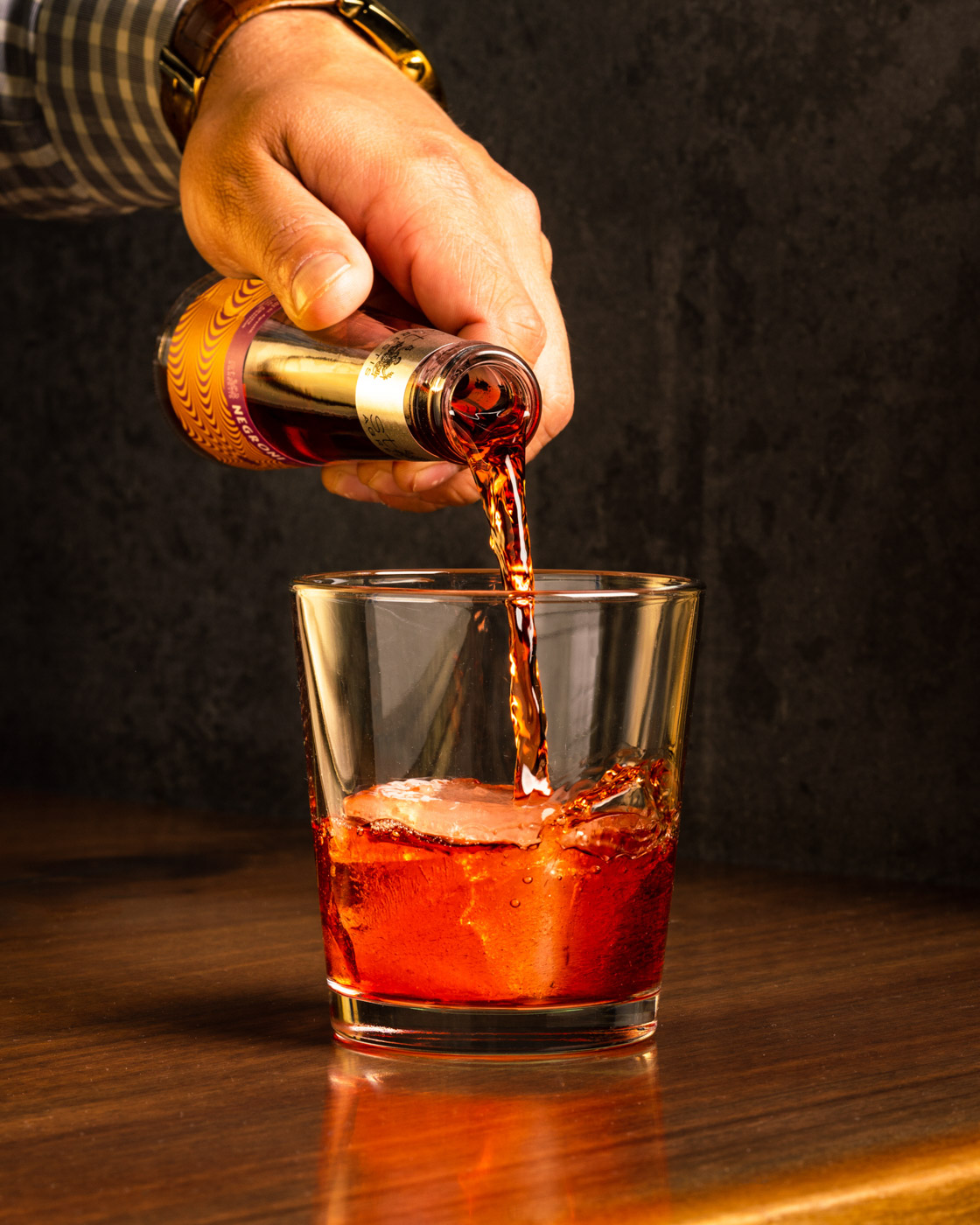
Let’s talk about alcohol and culture. Each society has such specific, historical representations. I happened to be in the Istanbul airport recently, and was reading about raki, for example.
Louis Catizone: Raki is actually a great and specific example; it’s not totally different than ouzo, which is pretty much the same as sambuca, which is a less sweet version of anisette, which is very similar to absinthe or pastis. If you just focus on anise, you could practically write a book about anise liqueurs. A lot of that started with Hypocrates drinking water with anise seeds for flavor. A lot of herbal liqueurs were about what medicinal qualities they had; or maybe something was seen as an aphrodisiac…
So much was about function. And the negroni is obviously very specific to Italian culture, as an appetite stimulant. Are you Italian?
Louis: My dad is from Calabria. He moved [to the U.S.] when he was eighteen, but the house he grew up in still exists and my family still has it, so I used to spend summers in Calabria.
How do you find Italian drinking culture today?
Louis: The amaro culture is strong all over Italy. But Italians drink regionally.
I love that amaro is this very specific lens to look at the entire peninsula, and how the the drink changes from region to region—there are very alpine blends in the north to Sicilian blends with a lot of citrus.
Louis: A lot of Americans think limoncello is the after-dinner drink of Italy. That’s very specific and centralized to Campagna. There are some Calabrese who drink it, but they drink more amaro in Calabria.
It’s been interesting to watch the negroni travel outside Italy. It seems like it has really gained traction in recent years. What do you think happened?
Louis: The American palate is geared so much more toward bitter than it has ever been. Think about it from a culinary standpoint; was it five years ago when kale really became a big thing? Kale is bitter. Dark chocolate in the last ten years has become so much more popular than it used to be. Dark chocolate is bitter. I think our palates have changed, and we’re craving a lot more of that bitterness.
Also, if you think of the culture of a place like Brooklyn, it’s so much more European than it’s ever been. Something like an aperitivo hour is much more a part of our culture now than it ever has been. It’s a sophisticated next step.
It’s no longer about “happy hour.”
Louis: Right. It’s Aperitivo Hour. To want to have a negroni or an Aperol spritz, maybe with some charcuterie, and then after dinner, to have more conversation over an after-dinner drink—whether that be an amaro or a grappa. The only cultural comparison traditionally may have been a brandy or scotch, maybe with a cigar, but that was usually exclusively for men. That’s out the window now.
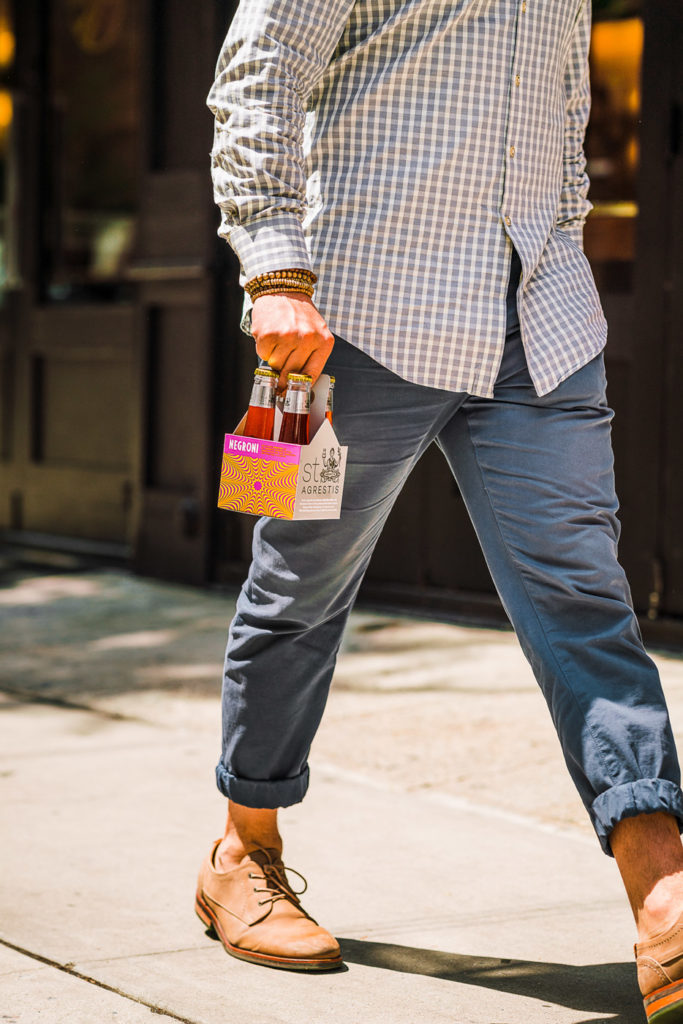
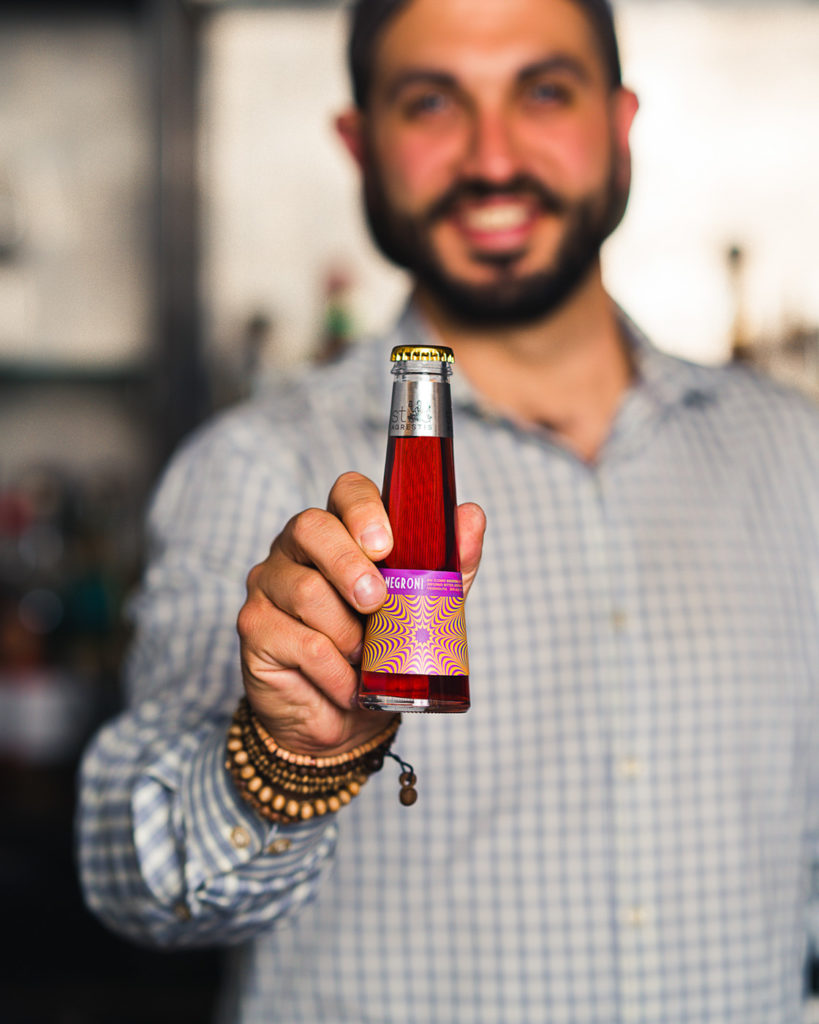
I hear people say some bar makes a “good” negroni, and it always baffles me given the 1:1:1 ratio. Do you feel there’s room for error here?
Louis: I actually feel like because it’s so simple, if you screw up a little bit, you screw up a lot. It depends how you like your negroni—a lot of people prefer it gin-heavy.
Is that an American thing? Wanting bigger, louder, more—that feels very American to me.
Louis: Right. That’s why the Spanish drink gin and tonic is not the same way we drink gin and tonic, and why they drink so much more of it—it’s not two parts gin and three parts tonic. It’s very sessionable.
And speaking of which, this bottle says the St. Agrestis negroni is 24%. I never would have guessed—it’s so nice of you to do the legwork for us. How does that science work?
Louis: That was fun. I would buy the ingredients, weigh it, add ice, stir and strain, repeat—about three dozen times. I’d come to the median dilution and then proof it based on the gained weight. What it weighed before, then stirred and strained, and what it weighed after; and then by proofing that I found out exactly how much alcohol. I stirred a lot of negronis (laughs).
So this is already calculated for dilution?
Louis: It’s pre-diluted, so that is an “up” negroni. You don’t have to stir it; it’s been strained into this glass to be poured over a large cube with an orange twist, or even drink it straight out of the bottle.
Do you drink yours up or on a rock?
Louis: I think one large rock and and orange twist is the perfect way to drink a negroni. They’re boozy. It can take some more dilution, for sure. That was the intention; I didn’t want it to be poured over ice and taste flabby. I wanted it to be able to be poured over ice—whatever ice you have in your freezer—and you can sip on it for twenty minutes and have that ice melt, and it’s not going to taste like a watered down negroni.
You’re using Greenhook Gin, which is made here in Brooklyn, and the bitter element is your own. What was the process of creating that bitter portion?
Louis: I always knew I wanted to make a bitter aperitivo. There are plenty of other bitter aperitivi on the U.S. market now, but a lot of them lean more toward sweet and less toward bitter, and they’re not good in a negroni. I wanted it to have that bitter backbone that it needed. The ingredients are coming from all over the world.
You’re not doing only Italian ingredients, or an American take on Campari…
Louis: No; I think there’s certainly a beauty to doing things that way, but this is not New York’s version of a bitter aperitivo. It is what I consider to be the best bitter aperitivo there can be, with the best herbs and spices that are coming from anywhere. It was built more around a full experience on the palate than on the idea of, “Let’s make it regional, of New York for New York.”
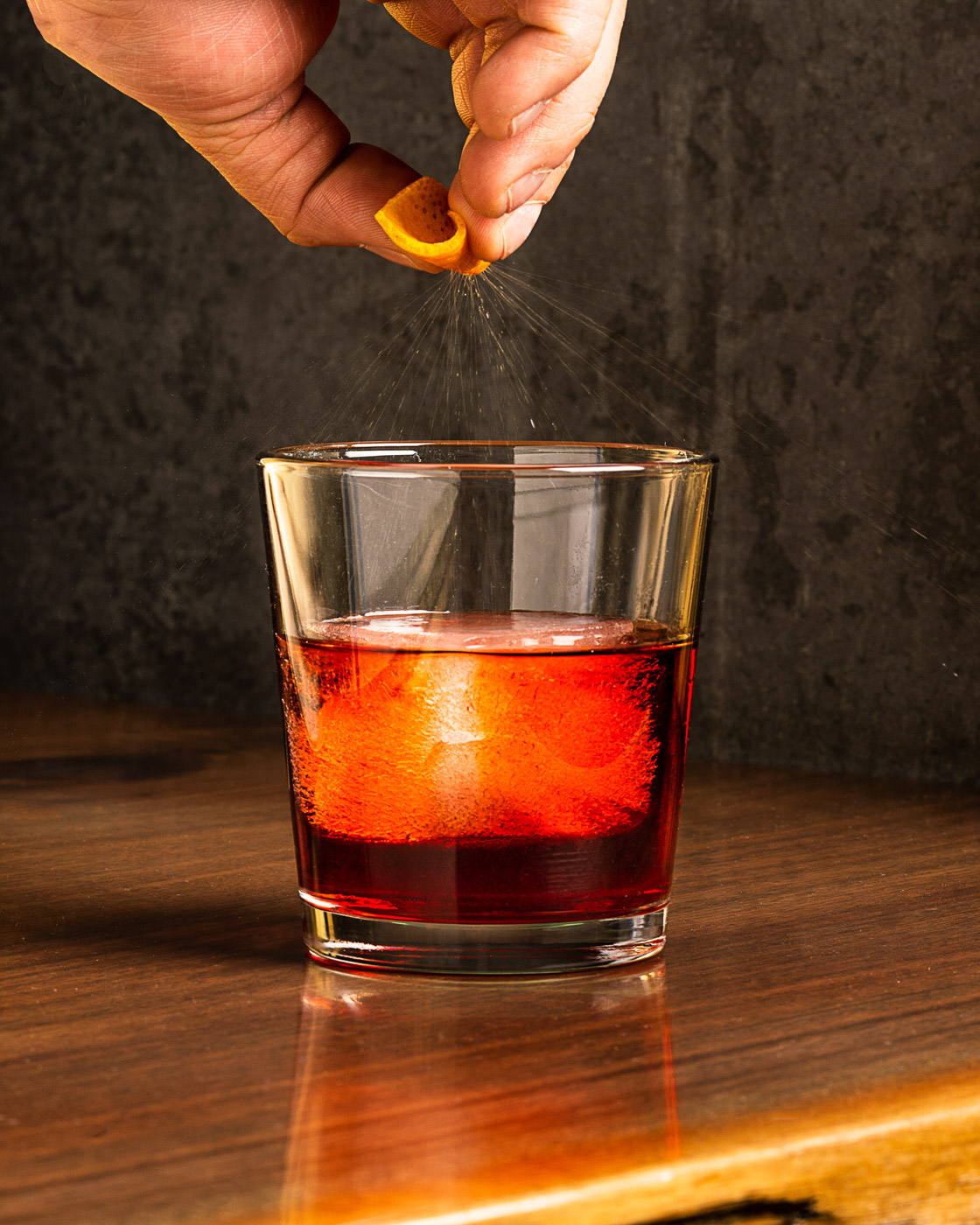
Was your bitter built intentionally to complement Greenhook Gin in a negroni?
Louis: It was built around the negroni in general. Releasing it as a standalone bitter, I didn’t want it to just work in this negroni; I wanted it to work in any negroni.
Is there a gold standard gin in Italy for negroni?
Louis: London dry gin is what the negroni was built around. There are a lot of new American gins that don’t have that juniper backbone; it needs that. Greenhook uses enough juniper to be considered a London dry gin, so it works perfectly in a negroni, but it has subtle citrus notes because it’s low-temperature distilled that’s really nice as well.
Will you release the bitter component individually?
Louis: Yes, the St. Agrestis Inferno Bitter will be released.
Okay, so tell us—what’s in there?
Louis: What’s in there is a secret (laughs). There’s no blueprint for making a bitter aperitivo, but the Inferno Bitter goes through three macerations: a bitter maceration, a floral maceration, and a citrus maceration. It has Campari bitterness, but more herbal complexity, more freshness, all natural color, 100% organic ingredients, so it’s a combination of fruits, vegetables and flowers.
Speaking of which, what’s your recommended food pairing for a negroni?
Louis: The negroni is a fun cocktail because it’s sweet and savory. A negroni with cheese is incredible. I had a negroni with a taleggio and the funk of the taleggio worked nicely with the bitterness and the touch of sweet. A salty cheese would work too. I could see it with a creamy goat cheese.
What’s the history of the drink in Italian culture?
Louis: It was almost exactly one hundred years ago. The negroni was named after Count Negroni. There are a couple of versions of the story, one in which he asked for an Americano with gin instead of club soda. Another version includes him not liking that Americans were drinking this drink called the negroni that had club soda in it, and then it changed that to the Americano, and the new one used gin.
I like that version of the story, whether it’s true or not; he was like, “No, that’s an Americano,” the same way that derogatorily the coffee is called an Americano because american soldiers in Italy couldn’t handle espresso. They wanted it watered down so it would drink more like American coffee. If I did something stupid growing up, my dad would call me an “Americano.” So, I sort of love it.
I’m curious now that it’s such a popular drink in the U.S., how it’s perceived in Italy given that attitude by Italians. I ordered the drink in Italy recently and got a bit of an eye roll. It felt very, “Oh, now you Americans and your negronis.” Have we bastardized it?
Louis: Not yet, if anything! We drink negroni here, but not to the extent that we could have ruined the negroni. Also, it’s big all over Europe now, so it might not just be the Americans; it might be every tourist in Italy who is ordering it. I read recently of the thirty most popular cocktails in the world, the negroni was number-two after the old fashioned.
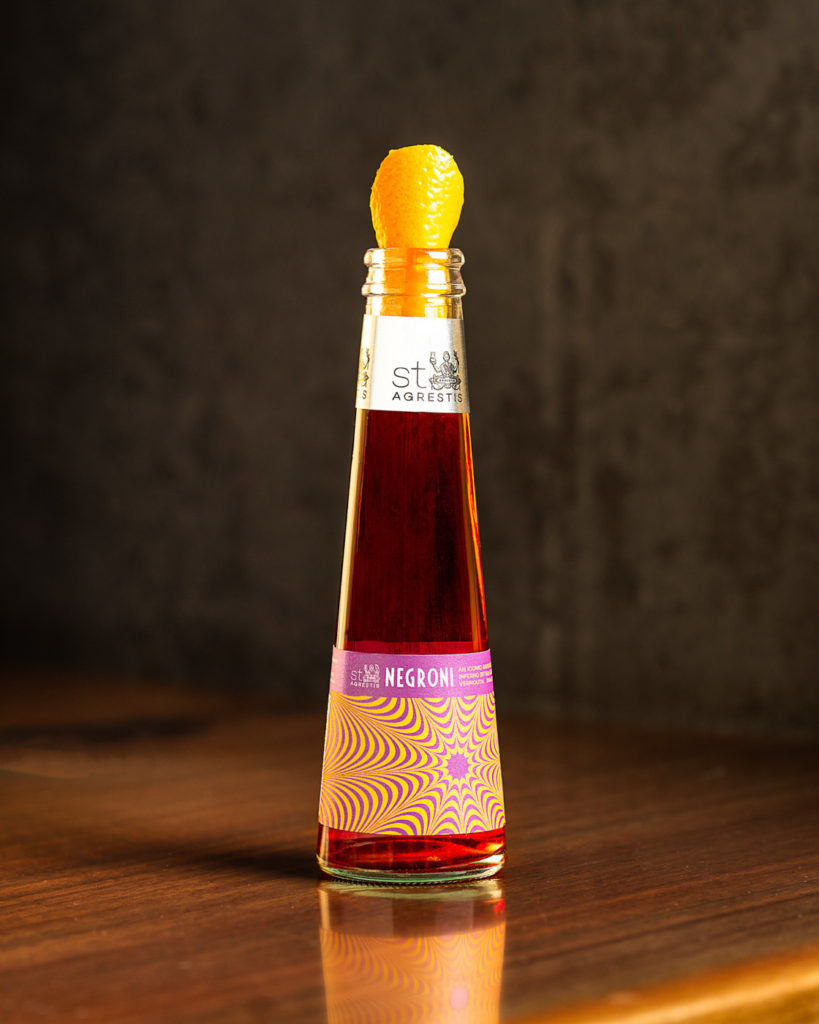
How do you think this would do in Italy?
Louis: I don’t know; it’s toss up. It might get rejected entirely.
Right. Either that or there will be this enormous pride that it is an extension of their product.
Louis: There’s also an affinity toward Brooklyn.
Do you see Brooklyn as a major part of the brand identity?
Louis: I do. I think the two worlds colliding and Old World meets New, that’s not just Italian; that’s the melting pot culture of Brooklyn. So many Italians have come here, and beyond that, so many Italians have gone back, or they visit here and walk over the Brooklyn Bridge and they see it.
Now they can travel back with the St. Agrestis version. In fact, one of my favorite things about this is at one hundred milliliters, this very cool bottle is even airplane-friendly. What’s the significance of the psychedelic-looking packaging?
Louis: The bottle shape is certainly an homage to all things Italian. My dad came here in the late seventies, and I wanted this to feel like New York [then]—to have this funk. I wanted it to be Cadillacs and New York vibes—kitchens and basements and psychedelic. I wanted a bottle like this for a very long time. I looked and could not find one, so it’s a custom model.
There’s a lot of buzz around it being an ideal summer drink, but do you see this being popular in other seasons? Or even used as a foundation for cocktail variations?
Louis: With the amaro, one of my favorite things to do is to use the equal parts of the traditional ingredients, but throw in an equal part of my amaro because it has this baking spice character to it that’s really nice for a winter negroni.
I also have been having people inquire—and so I finally tried it and it’s great—asking if you could put prosecco over the top. It’s this with a float of prosecco and a full orange slice. It’s somewhere between a sbagliato and a spritz.
I was hesitant at first, thinking no, don’t alter it. But then I thought, no, do whatever you want! The Italians would tell you not to alter it. But I say however you want to drink it, drink it.
They do a ton of variations there; it’s such a customizable drink. What does a white negroni consist of in your mind?
Louis: It’s using a substitute for Campari and in some cases can be made with dry vermouth, although I think most people would use a sweet vermouth. I’ve seen many variations—one with pastis instead of Campari, which was very interesting. Luxardo has a white bitter, which is clear.
I’ve heard a lot of lore about the way Luxardo is made, but I suppose that’s a whole different story.
Louis: I believe Italians about this much of the time. It’s always, “We do it the way we do it.” I love that, but here—we’re asking, why this? What leads to that? We demand transparency because we’ve been burned as a consumer population. Tobacco, soda companies, potato chip companies, fast food companies—we want answers now. But if you know the source and you feel there’s the right intentions, and the FDA and the TTB have regulations in place. They know my recipe; they’re the only ones who know it. There’s nothing in there that’s harmful—other than alcohol (laughs).
Italians––they want us to just not ask questions.
Louis: Right. Don’t ask questions. Just enjoy it.
——
Photography by Robert Barcelo.





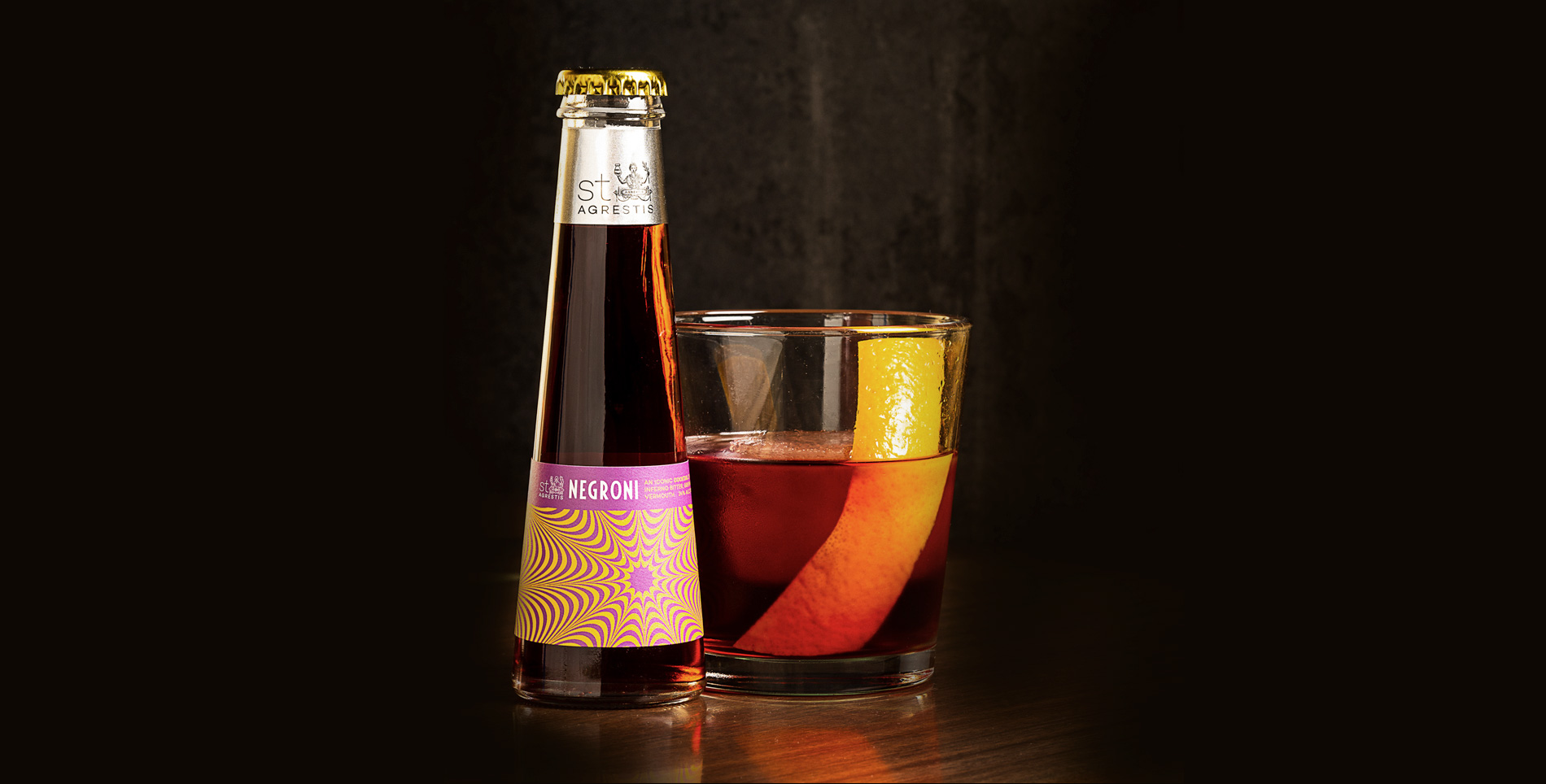

Our comments section is for members only.
Join today to gain exclusive access.